This is a very comprehensive article by guest authors Efra and Annabel in which they offer you their experienced hand to immerse you in the fascinating world of underwater photography. And if what you like is nature photography, don't miss our most complete guide, with tips, tricks and lots of inspiration.
The photosub is a photographic discipline that is booming. You just have to look at the vast majority of manufacturers that are betting on underwater cameras . Olympus, Sony, Nikon, Canon..., all these brands have waterproof amphibious cameras without the need for a housing.
And we are not only talking about All Weather (Amphibious) cameras or the famous GoPro. Underwater housing brands have also set their sights on Smartphones , with the possibility of incorporating specific lenses such as angular or macro. Crazy huh?
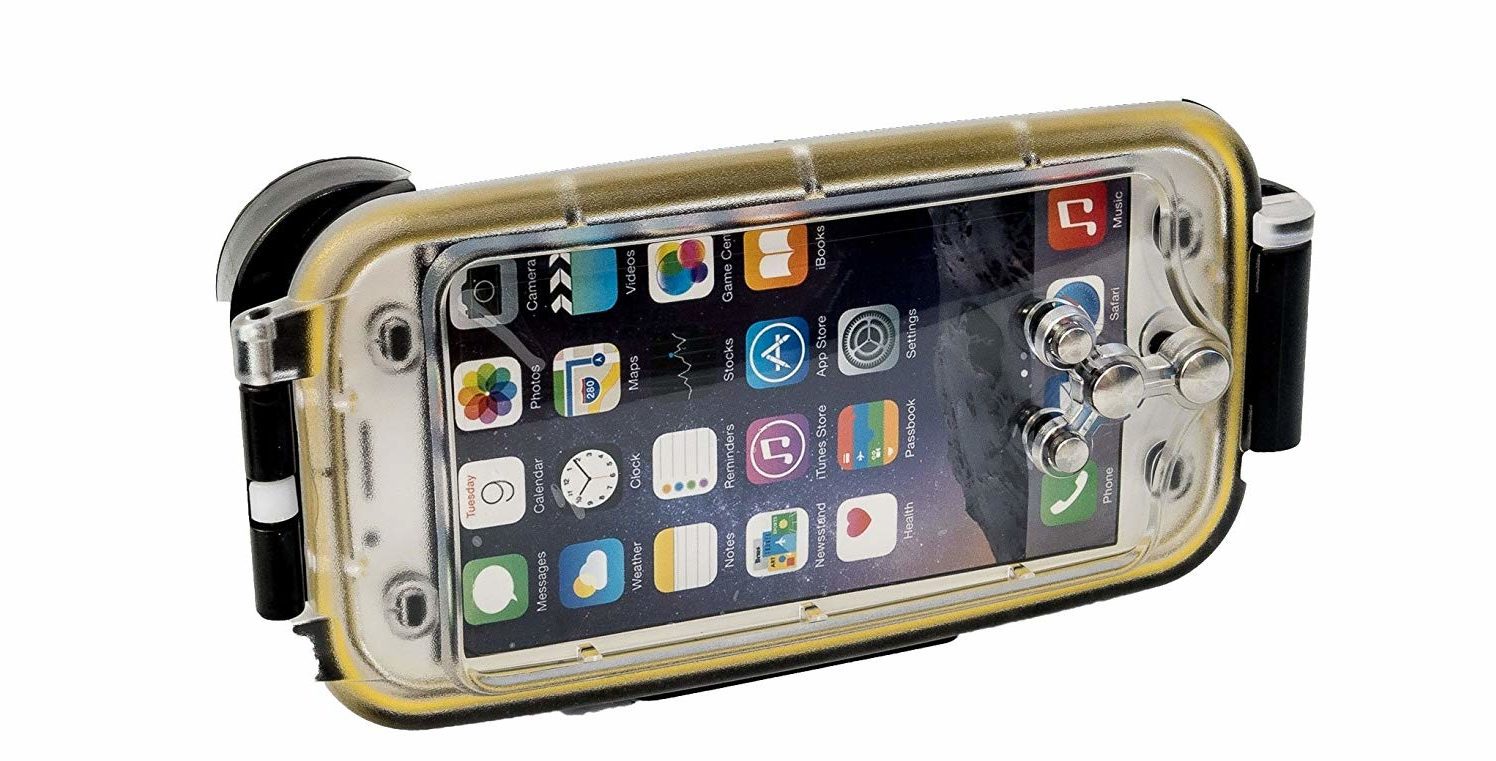
And what do we mean by all this?
Well, finally, underwater photography is available to everyone.
The photosub is a photographic discipline with a series of particularities. The aquatic environment has its own rules and you have to adapt to them if you want to play at home. The way to move through the seabed requires learning. The lighting technique is different and the equipment must be adapted to the water.
But don't be scared, quite the opposite. If you know how to swim, with a little practice you will learn to dive and you will be able to portray a world very different from the one you are used to. New landscapes and animals never seen before are waiting for you, nature at its best, the place where the life you know today originated.
Don't you find it exciting?
We are going to give you 9 tips so that you start with a good fin in underwater photography.
1. YOU HAVE TO BE COMFORTABLE IN THE WATER
First of all, the most important thing is to value your experience in an aquatic environment. If you are not comfortable in the water, it will be difficult for you to take good photos.
You have to know that there are 3 modalities to practice this photographic discipline. Do not think that the photosub is only for scuba divers.
UNDERWATER PHOTOGRAPHY WITH SNORKEL
It is about swimming on the surface of the water with fins, a mask and a tube. Depending on the place or the time of the year in which you practice it, you will also need a wetsuit. If you swim in areas where there may be boat traffic (not recommended) use a signaling buoy.
If you're not a very good swimmer you can wear a vest, but this is an indicator that you're still not comfortable in the water, keep practicing ? .
This modality is the easiest for a beginner, you only need to know how to swim.
The disadvantage is that by always framing the camera from the surface, it limits you to compose an image or do different framing. But if you are not very aquatic and want to start, snorkeling is your best option.
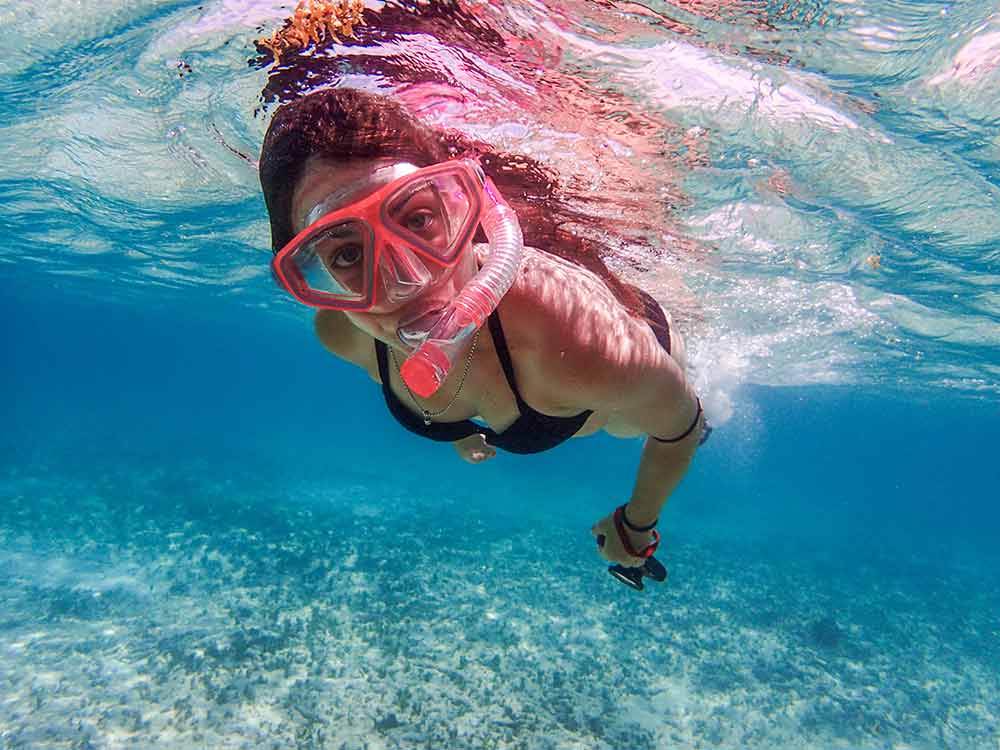
APNEA (SUBPHOTOHUNTER)
The difference with the snorkel is that you go down a few meters with your lungs, being able to access other shooting angles and marine subjects. If you choose to use a wetsuit that will make you float, you will need a weight belt to make it easier to descend. A marker buoy will also be necessary if you practice in places where there may be boat traffic.
This modality requires previous training and good physical condition, either with a specific course or practicing on your own, always accompanied. Nor do you need to be a professional freediver and go down 15 or 20 meters, between 2 and 5 you can start practicing underwater photography.
We love to photograph freediving because of its lightness. Unlike autonomous diving, you do not have the limitation of the air you have in the tank, nor do you have to carry all the equipment.
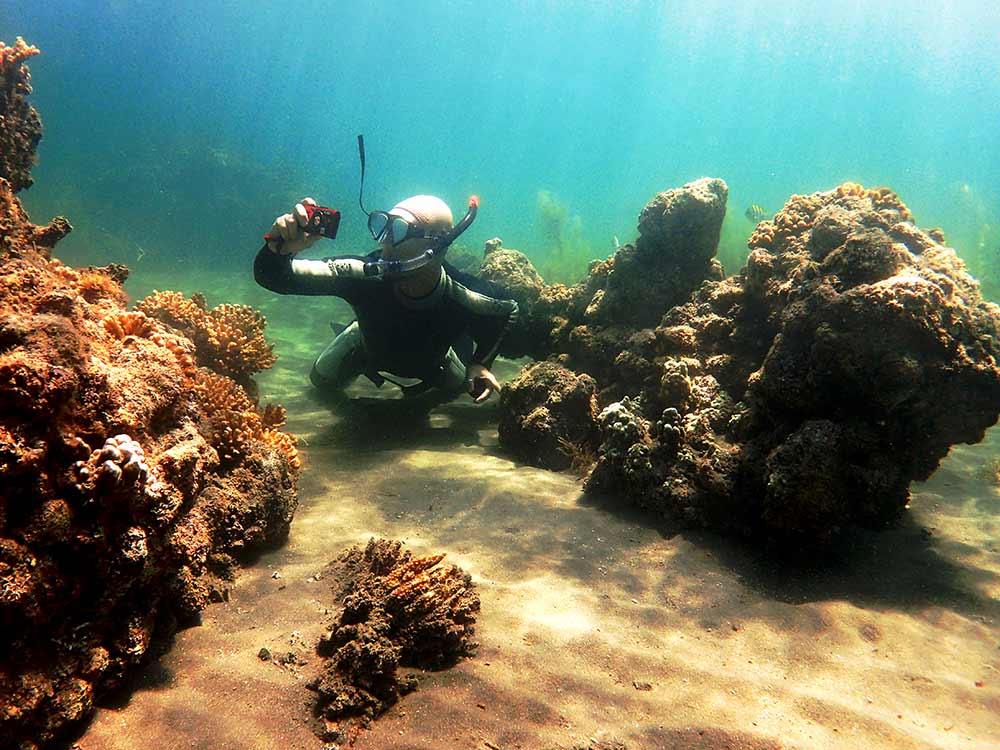
UNDERWATER PHOTOGRAPHY WITH AUTONOMOUS EQUIPMENT
Scuba diving allows you to easily access different depths, without having to emerge during the duration of the dive.
You can try different frames or compositions. This allows you to indulge in other shooting angles and more time to set up your camera. When shooting freehand, background times have to be much faster for these purposes.
It's our preferred modality, because you have plenty of time to measure light and work with a subject without having to come up for air.
To dive with autonomous equipment you will need to take a diving course and get some experience. It is not difficult, it is a relaxing sport that the vast majority can practice regardless of age.
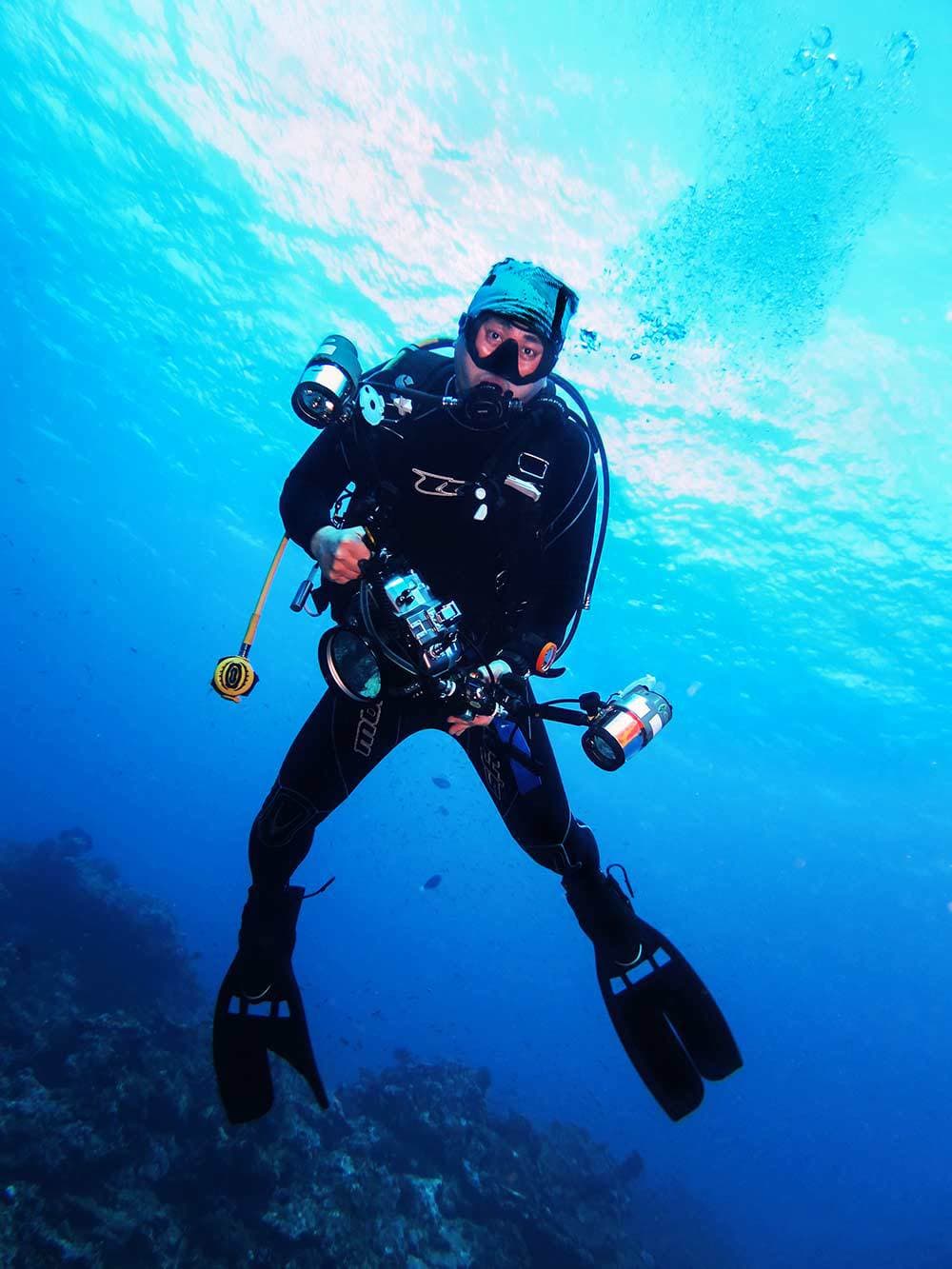
When you master scuba gear and buoyancy, it's time to start taking underwater photos.
The necessary equipment is more extensive: regulators, tank, weights, manometer, depth gauge, vest, mask and snorkel , neoprene, compass, dive computer, signaling buoy and knife.
Many fotosub hire the service of a boat in diving centers, to be able to access spectacular places far from the coast. Although you also have the option of renting a bottle and practicing at a shallow depth.
Now that you know the different modalities and depending on which one you choose, our advice is to practice your aquatic skills before launching yourself with the camera.
This is very important, and not only for your safety, but also for the conservation of underwater ecosystems. You have to be very careful not to destroy the corals with your fins, they are very fragile.
Start practicing in small coves at a shallow depth. You have no idea how much life there can be underwater!
Underwater photography is highly recommended to practice with a partner and in scuba diving it is mandatory.

2. CHOOSE YOUR CAMERA AND HOUSING ACCORDING TO YOUR NEEDS
THE UNDERWATER CASING
Once you've become a real frogman, it's time to start flirting with the camera.
A very important point when choosing your camera is underwater housings. Each camera has its specific housings and these will not work for different models of the same camera. Remember that there are not cases for all cameras, and these are made of polycarbonate or aluminum.
Polycarbonate ones are cheaper, less ergonomic, and some don't give you access to all the buttons. They are also more prone to fogging and flooding. The aluminum ones are more expensive but they solve all the shortcomings of the first ones.
Our advice is that if your budget is tight and the camera is very simple or waterproof, buy a polycarbonate one. If you have left the dough in a good camera, do the same with the housing.

THE CAMERA
If you are already a photographer, then you will have your camera. Find out if there is a specific waterproof housing for your model.
Submerging an SLR can cost a lot of money. One option is to consider the idea of starting first with an advanced compact. Although this is already a personal decision.
If you do not have a camera or photographic notions, it is best to start with a compact submersible . At first, you can start with auto mode and focus on composition and framing. When you master these techniques a bit, you will already go to manual mode.
Keep in mind that not all compact cameras have manual mode, and in the long run, if you want to keep evolving, you're going to need it. Remember this when buying your first camera.
DIFFERENCES BETWEEN COMPACT, MIRRORLESS, AMPHIBIOUS OR SLR CAMERAS.
COMPACT CAMERAS
These are very widespread in the fotosub and are used by many users thanks to their versatility. Compact cameras have a great advantage, you can use different wet lenses without getting out of the water.
As a good reader of the Photographer's Blog, you already know the importance of using specific objectives for your sessions. Wet lenses are attached to underwater housings and there are different types. You can use macro, angular or endoscopic lenses during the same dive.
As a counterpart, the sensors of the compact ones are smaller if we compare them with those of the reflex or mirrorless . But you have advanced compacts like the Sony RX100 V with very good image quality and manual mode.
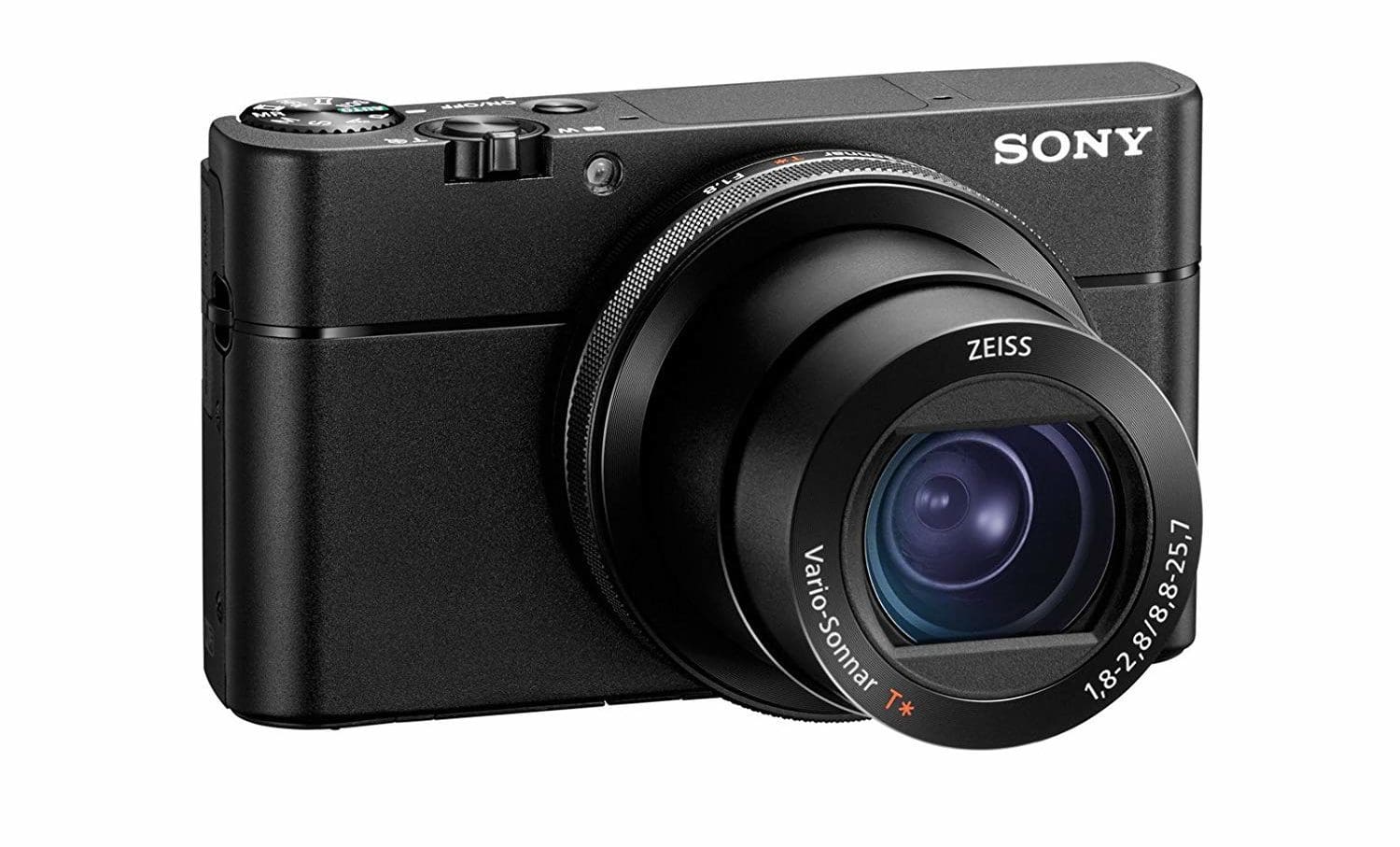
AMPHIBIOUS CAMERAS (ALL WEATHER)
Unlike conventional compacts that need a case, these are sealed and waterproof to a certain depth. They can also incorporate a casing and subject them to greater pressure / depth.
If you like pure minimalism and go with a small piece of equipment, these cameras are ideal.
Due to its small size, it is very easy to frame and access places such as small cracks. This is a great advantage in macro photography , with just one hand you can frame and reach places that with bulky equipment would be impossible.
The disadvantage is its small sensor and that most do not have a manual mode. But the benefits of some models like the Olympus TG4 or TG5with its very powerful macro without the need for a lens, it is worth considering. In addition, this model allows you to change the aperture, the ISO and do a manual white balance.
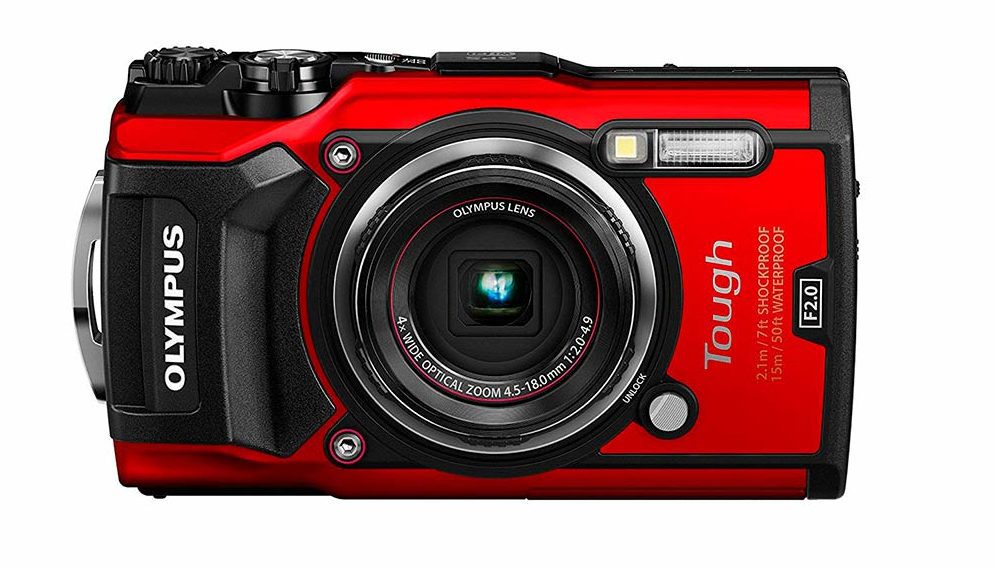
SLR and Mirrorless
This is the preferred option for those looking for the highest image quality at literally any price.
The problem is not the body of the camera, it is the price of the casing and the fronts that protect the lenses from water. And not all case manufacturers have models for cheap DSLR/ mirrorless cameras .
Also, to change targets you have to get out of the water. Although there is also the possibility of attaching some wet lenses to the housing.
Another disadvantage is its large volume and the bulkiness of the set.
For all this, this option ends up being valid only for the most experienced underwater photographers.
Our advice is that if you are starting, do it with a compact or an amphibian. If over time you get hooked on underwater photography and feel the need, you'll make the leap to the older sisters... or not ? .
At first, you already have too much mastered aquatic skills to go into the water with such a bulky camera. Remember that you are starting and want to enjoy, bet on minimalism.
If you are still evaluating whether the photosub is for you, think before you invest. Photography is not a cheap hobby, much less underwater.

3. MAKE GOOD USE OF NATURAL LIGHT
If light is the most important thing in terrestrial photography, in underwater photography it is much more so. This is because you are in a medium that is denser than air.
As you gain more depth and distance, the colors are absorbed. Red first, followed by orange, yellow and green, until everything is a monochrome blue.
There are more factors underwater that influence your images. Refraction makes you see objects 33% larger and 25% closer. Also the reflection by which, depending on the angle of incidence of the sun's rays on the surface of the water, more or less light enters.
Leaving physics class aside and summarizing, what you have to know is that the deeper you dive, the more artificial light from a spotlight or flash becomes necessary.
As you are starting out, our advice is to do it very shallow. We have taken beautiful stickers between 2 and 5 meters without artificial light. If you dive at noon, with sun, without clouds and with calm water, that is when more light penetrates the water. In this way you will make the most of natural light.
At first, it is common sense to practice in shallow water. Even when you are already a veteran photosub, many times you will want to do it at a shallow depth. This is because you have a lot more light and more time to practice.
In your early days you may not have an external flash and will have to use your camera's built-in flash. This small flash will be worth it for macro and little else. But if you dive shallow, even if you shoot without a flash, you will be able to get more colorful photos at 3 meters than at 10.
When shooting without flash and if your camera allows it, white balance (WB) in manual mode at the depth you are working with. If you don't have the WB in manual mode, use the cloudy day automatic. In this way you will recover the red tones that are the first to be lost.

4. USE CORRECTIVE RED FILTERS
There is a series of filters to use during the first meters and to be able to recover the warm colors. Although depending on the water, these filters can be red, magenta or orange.
Filters are usually wet and can be taken in and out of the housing without getting out of the water.
They are an alternative to artificial light. They usually stop being effective after 12 meters or so, depending on light conditions and the time of day.
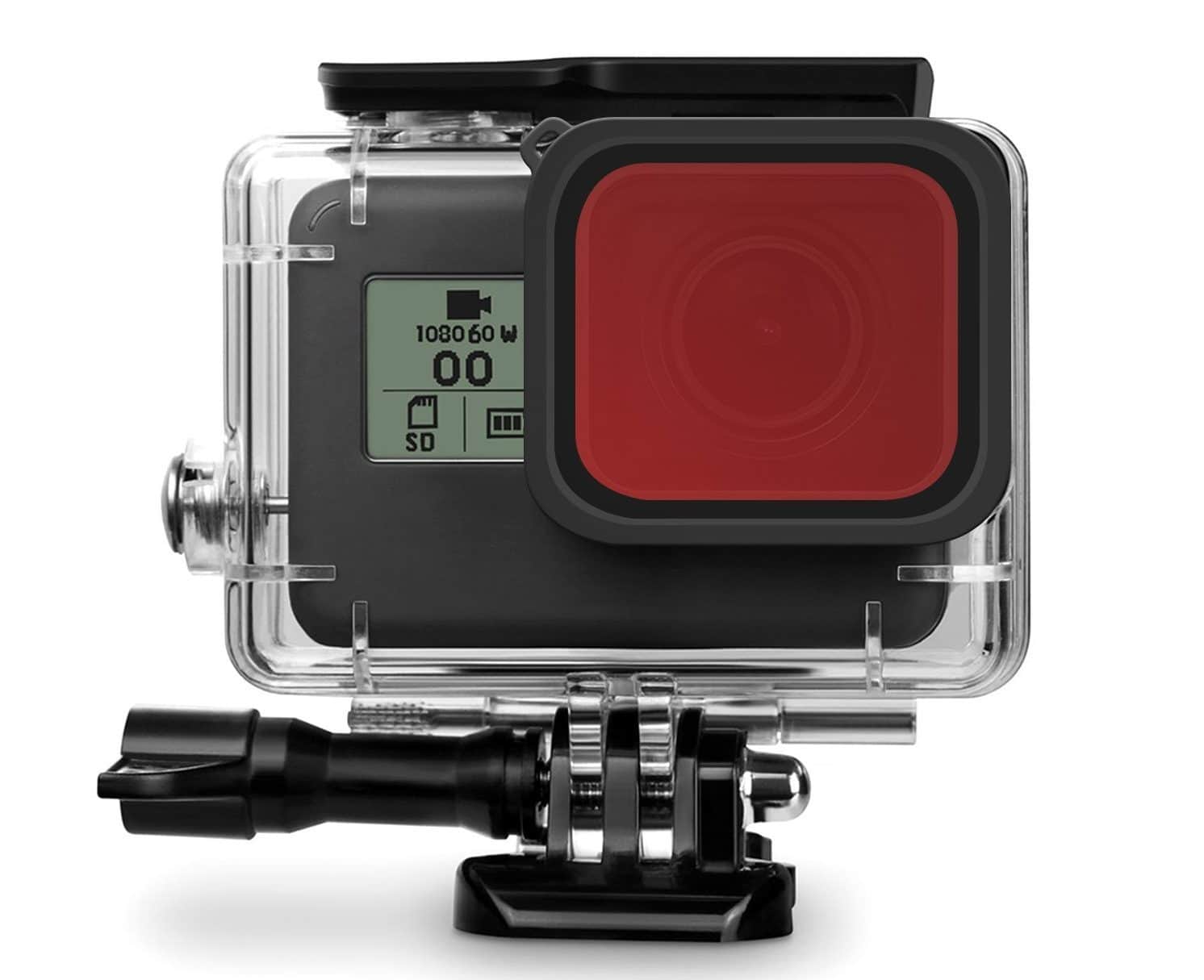
These filters do not dye light red. What they do is attenuate the dominant colors such as blue and allow the colors that are lost in the first meters, reds, oranges, etc., to pass. This compensates for the lack of existing reds.
You have to be careful when you use them very close to the surface or with the flash, because the photos will come out with a red cast. And it is recommended that you take care of the white balance when you use them.
Unlike flash, with filters you don't have as many problems with the appearance of particles, as you will see later.
Keep in mind that when placing a filter, even if it compensates for the reds, it will subtract some light, so you may have to open the aperture or raise the ISO. For this reason we recommend that you purchase quality ones.
Some cameras have underwater photography mode and the result is similar to what is achieved with filters. If you don't have artificial light, use this semi-automatic mode.
5. LEARN TO USE THE FLASH
External flashes are usually used in the fotosub, one or two depending on the preferences of the photographer. With two flashes you have much more coverage for ambient photography. The vast majority work with fiber optics and slave with the built-in flash.
When diving at depths between 10 and 30 meters, its use is mandatory. With the camera's small built-in flash, you're limited to macro photography and small subjects very close to the lens.
Effective handling of one or two external flashes depends on how you position them. Also the distance to the subject, the aperture and the power of the flash. And you have to know how to position them to avoid suspended particles. With practice and experience everything is achieved ? .
BUILT-IN CAMERA FLASH
Our advice is to start with the camera's built-in flash. Remember that you are still assessing if you like this hobby and a specific waterproof flash is not exactly cheap.
Underwater there are many particles in suspension. There are days that more and others that less, but to a greater or lesser degree they are always present.
The problem is when there is a lot of distance between the lens and the subject. When this happens, all the particles in the path of the flash light are illuminated.
This is why in macro photography, since there is so little distance between the lens and the subject, it is easy for not so many particles to come out. If you shoot the built-in flash at long distances, you will have a photo full of particles.
You may find shrimp, crabs and some fish inside small crevices. Even if you practice at a shallow depth with a lot of light, if these little guys are in the shade where the sun's rays don't reach, you won't even be able to focus on them.
Tip: in these cases you have to have the focus light of your camera activated or use a small focus. Once in focus, use the built-in flash. The light from the flash will bounce off the walls inside the crack and you will get a homogeneous light. If you want to backlight a small, close subject, you can use it as a fill flash.

EXTERNAL FLASH
If you already know that the photosub is hooking you, getting an external flash is a very good investment. Think that if you change your camera and housing in the future, you can continue using it.
There is a saying in the fotosub: a simple camera with a flash is more effective than an advanced camera without a backup light.
There are good relatively cheap and light flashes like the Inon S2000 that give very good performance. If you buy an external flash, a whole new range of possibilities opens up.
With an external flash you have much more coverage and can access ambient photography, other bigger critters, and practice in greater depth without the limitation of the built-in flash.
The external flashes are placed on an articulated arm of greater or lesser length. In this way you can vary the incidence of the flash.
To avoid particles, never point the flash directly at the subject. Do it indirectly, place it so that only the residual light reaches it.
Remember our advice, start with the built-in flash and when you've got the most out of it, you can get an external one.

6. GET AS CLOSE AS POSSIBLE TO THE SUBJECT
In underwater photography you have to get much closer than in terrestrial photography. That is why angular, micro-angle, fisheye and macro lenses and objectives are widely used. Long telephoto lenses don't make much sense underwater.
This is due to the peculiarities of the aquatic environment such as reflection, density, particles, color absorption... Underwater the range of flashes is much less than on land.
There are situations where you will have to settle for a monochrome blue photo. For example, a sunken ship. No matter how powerful your flash is, you will not be able to illuminate the entire scene.
In these cases, and with good visibility, you will have to expose with natural light. If there is not much depth, the filters and the white balance will be very useful for you.

To bring colors back with your flash, get as close as possible to your subjects.
At first, everyone tries to chase the fish to take pictures, and what they get are photos of the fleeing fish's tail. In order to get close to a subject you have to earn his trust. You can do this by approaching them without sudden movements and waiting until the animals don't feel threatened. When they trust you, many of them will approach your camera.
YOUR BEST PROTAGONISTS
It also depends on the subject, there are some that are practically static, such as opisthobranchs, which are small, very colorful sea slugs, or starfish. These animals are ideal to start practicing.
Other desirable subjects to easily photograph are blennys. They are small benthic fish that do not usually swim long distances and always hang around the rocks. They are curious, photogenic and if you don't scare them they will pose for you.

You also have corals, rock formations, algae and sponges to compose your underwater landscapes. If you open your eyes wide, you will discover that underwater there is a lot of life to portray, but do it with patience and respect.
Remember that you are only a mere spectator, do not touch or harass any animal or plant, take memories with you and leave only bubbles.
7. CHOOSE A GOOD PLACE TO PRACTICE
To take a good underwater photo home with you, you will have to find an attractive place. Normally underwater life proliferates near the coast, in rocky areas and full of plants such as posidonia. All kinds of animals coexist underwater and many of them seek refuge to avoid being preyed on.
Dive near the rocks and keep an eye out. In a single stone you can find different animals and some may be hidden. Octopuses, crabs, nudibranchs, shrimps or the young of all of these. There are animals that can be seen more easily, like many species of fish, but since they are fast, they require more practice to immortalize them.
If you get into a sandbank, near the shore of a beach full of bathers... you will find little bug ? .

As we have already commented before, divers usually use a boat to reach the diving spots. These points are already located by the diving centers and you're going to be a shot. But this does not mean that there are not good shore dives where you can practice.
Also do not forget about fresh water. Although there is not the same explosion of life as in the sea, you can discover other very attractive fauna such as amphibians, crustaceans, reptiles or river fish. In fresh water there are usually submerged trunks and beautiful aquatic plants to compose your images. If the place has good visibility, you can get attractive photos.
You also have the pools. Unless they are abandoned, you will find little fauna ;). But they are very good for practicing underwater portraiture thanks to their good visibility and shallow depth.
Keep in mind that each sea is different, diving in tropical seas is not the same as in the Mediterranean. Each one has its ecosystems, another temperature or different visibility. This is another reason to plan your next vacation.
Wherever you go, do it accompanied and be prudent. Do not go into the water in bad weather or poor training. And before venturing into unknown places, seek information.

8. ADAPT THE PHOTOGRAPHIC TECHNIQUE TO THE UNDERWATER ENVIRONMENT
The technique that you are going to use is basically the same as in terrestrial photography. Everything you have learned in the Photographer's Blog will help you. Obviously, you will have to adapt it to the underwater environment and you will have less light than on land.
Forget taking long exposure photos or using long telephoto lenses!
If you have an automatic compact camera, you will have to use some automatisms to your advantage such as semi-automatics. And if, for example, you need a fast speed, use the sports or children playing mode. To do macro, use the flower mode. Also the semi-automatic mode for cloudy days, to recover warmth in your photos if your camera does not succeed with the automatic WB.
If your camera has manual mode, you will have more control over your photos. It uses the flash and aperture together with the distance to the subject, to control the correct exposure of the scene covered by the flash light. To correctly expose the background where the flash does not reach, you will do it with the shutter speed.
Techniques that work on land also work underwater ? .
Photograph the animals at eye level, use the law of gaze , look for vanishing points or apply the rule of thirds.
Underwater there are many textures. You can recreate yourself with the roughness of some corals, the scales of a fish or the spines of sea urchins. You can also take portraits, underwater landscapes or photo report if you find some garbage.

9. PRACTICE
It is the best advice we can give you. Think that many divers learn underwater photography techniques. You already have that earned, now you need some ease in an aquatic environment.
It is often said that a diver is more likely to learn underwater photography than a photographer to learn scuba diving.
But with the appearance of so many action cameras, amphibious cameras or mobile phone cases, this is changing. Or when you go to the beach you don't see many people with GoPro or underwater cameras? And they are not divers. What sets you apart from them is that you are a fan of photography and you already have a good foundation.
At the beginning it is normal that your photos do not turn out completely well, but everything will come if you are persistent and we photographers are, and a lot.
Remember that to practice the photosub it is not necessary to do it with a bottle, but if you decide to take an autonomous diving course, you will surely not regret it. Diving courses are great fun and are designed for the whole family. It is a very calm sport and brings you closer to nature like few other sports do.

Have a lot of fun mate, enjoy the sea and, above all, give an opportunity to a discipline as exciting as underwater photography.


